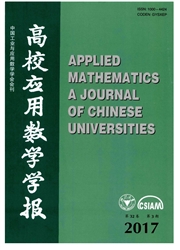

 中文摘要:
中文摘要:
建立了由制造商、零售商、顾客、政府与第三方物流构成的闲环供应链回收再制造模型,在传统模式(制造商-零售商-顾客)的基础上,引入电子商务模式(制造商-顾客),政府为监管制造商回收废旧产品,设定标准回收率并对其进行奖惩。模型以供应链优化和增加成员利润为目的,通过博弈理论分析多阶段成员的决策行为和差异产品的定价。算例结合某家电下乡产品回收再制造情况进行数值计算,分析参数变化对回收率和闭环供应链效益的影响,为闲环供应链的管理提供理论指导和建议。
 英文摘要:
英文摘要:
The paper sets up a closed-loop supply chain recovery and reproduction model composed of manufacturers, retailers, customers, government and third-party logistics. Based on traditional model (manufacturer-retailer-customer), e-commerce model (manufacturer-customer) is introduced. The government sets up standard recovery ratio, rewards and punishments in order to supervise manufacturers to recycle waste products. The model aims to optimize the supply chain and add members' profit, analyzes decision behaviors of multi-stage members and differentiated product pricing through game theory. Combined with recycle and reproduction of Home Appliances to Countryside, this paper analyzes effects of parameter variations on closed-loop supply chain benefit to provide theoretical guidance and suggestions for manage- ment of closed-loop supply chain.
 同期刊论文项目
同期刊论文项目
 同项目期刊论文
同项目期刊论文
 期刊信息
期刊信息
